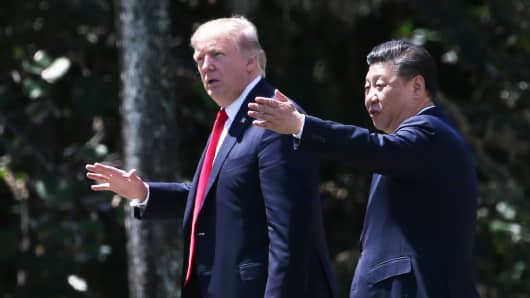Led by Germany's export champions, the Europeans are showing what Washington may wish to consider. The European Union has already moved to limit both trade and China's investments, arguing that they were simply responding to similar limitations the EU businesses are encountering in the Middle Kingdom. The thawing of the EU-China trade and investment regime could take a long time, even in the unlikely case that Germans agree on their new coalition government by the beginning of next year. That, of course, would strengthen the hand to American trade negotiators.
China is fully aware of those difficulties. Hence the temptation to package trade as part of Beijing's lofty vision of great power relationships. That sounds like an exalted talk about how America and China can work together to build a global architecture of peace and economic prosperity — circumscribed by China's red lines on its maritime borders, Korean Peninsula and internal issues where the Communist Party remains in charge of "socialism with Chinese characteristics."
It will be interesting to see how Washington will respond to all that at the time when stopping and reversing its huge, and growing, trade deficits with China is a matter of great urgency. That would show whether the U.S. and China can establish trade mechanisms and procedures for an acceptable, and viable, agreement around their clashing red lines in Asia and in the rest of the world.
China is not sure; it is hedging its bets, just in case, and is working hard to reduce the American leverage on its strategically important issues. Here are a few examples.
Beijing is taking the lead for a peaceful resolution of the North Korean standoff. Passing that acute phase in the current crisis, the Chinese (and the Russians) are envisaging a gradual elimination of Pyongyang's nuclear weapons and their medium- and long-range delivery vehicles — while drawing the North Koreans into the economic and political mainstream of the world community.
Using South Korea's hugely important economic interests in China, Seoul was "convinced" to shelve (whatever that means) the American missile shield — an issue strongly opposed by Beijing. Last year, China took $124.4 billion of South Korean exports, nearly double the volume of sales to the U.S., and remained Seoul's most important trade partner by far.
The Chinese media reports also have it that Seoul refused to participate in a trilateral military alliance with the U.S. and Japan.
China's relations with Vietnam have improved considerably as well. Last week, the two countries pledged an "all-out cooperation," and a state visit to Vietnam for the Chinese President Xi Jinping is set, after the APEC meeting, on November 12.
By contrast, relations with Japan remain a big problem. China is inviting Japan to use its newly minted two-thirds "super majority" in the Diet's lower house to tread a friendlier course in the spirit of key political agreements since China and Japan normalized official ties in 1972. A long shot indeed.
Finally, to make sure the message is understood, China is warning the U.S. to stay out of the South China Sea territorial disputes, Chinese military installations are being built on contested islands and, sporting army fatigues, Xi was telling his armed forces last Friday "to improve their combat capability and readiness for war." And that's only a few days before Trump's "state visit-plus."



